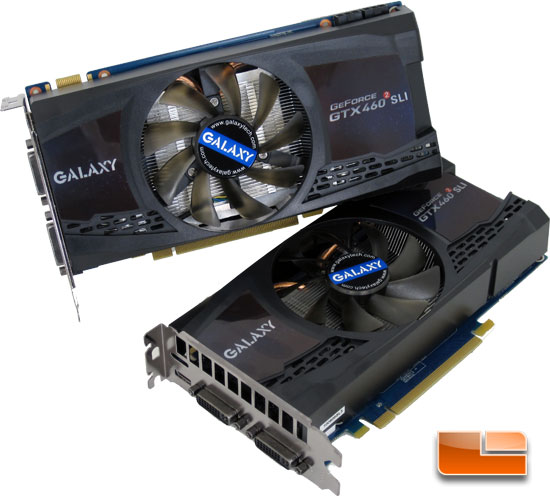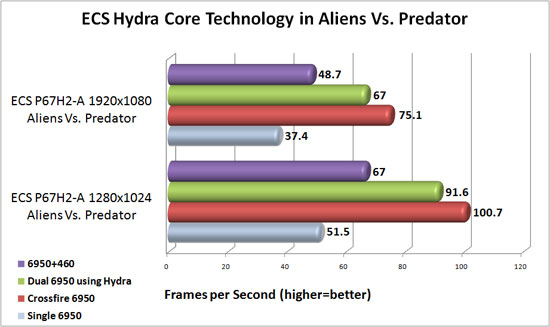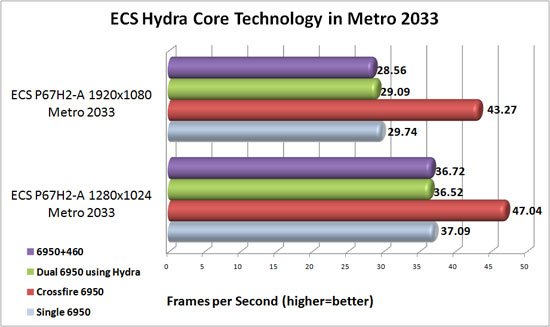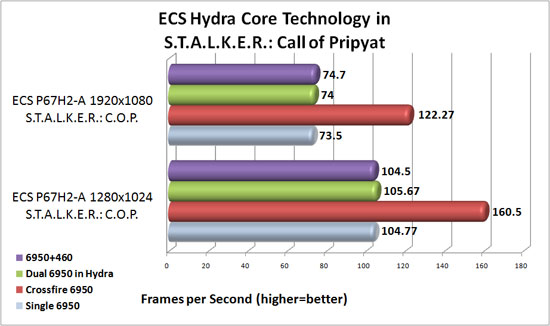ECS P67H2-A Black Extreme Motherboard Performance Review
ECS P67H2-A Black Extreme Lucid Hydra Core Performance

The ECS P67H2-A Black Extreme takes advantage of the Lucid Hydra Core technology. We wanted to play with a little bit of mixing and matching of graphics cards from different vendors. We already took a look at a pair of Galaxy GeForce GTX 460 1Gb graphics cards. Unfortunately performance in an SLI type configuration was less than we hoped for. In our charts below we will take a look at the performance with the XFX Radeon HD 6950 as primary with a NVIDIA GeForce GTX 460 running in parallel. We will also look at our pair of XFX Radeon HD 6950’s running in parallel with Hydra technology versus a CrossfireX configuration.

Aliens Vs. Predator gives us some promising results. Adding a Galaxy GeForce GTX 460 to the XFX Radeon HD 6950 we saw an improvement of 30% at 1920×1080 and 1280×1024 to the performance of the single XFX Radeon HD 6950. Running our pair of XFX Radeon HD 6950’s in parallel using the Hydra Core technology we lost ~11% of the performance we saw in CrossfireX.

The ECS Hydra Core seems to hinder the system performance in Metro 2033. Running a single XFX Radeon HD 6950 we were hitting frame rates of 29.74 at 1920×1080 and 37.09 at 1280×1024. Once we added in a second card from either vendor we saw a performance hit of as much as 4%.

S.T.A.L.K.E.R.: Call of Pripyat didn’t see any significant gains or losses from a second graphics card when we were using the Hydra Core technology. We did see an improvement of 1.6% at 1920×1080 when we added a Galaxy GeForce GTX 460, though that’s nothing like the 30% gains we saw in Aliens Vs. Predator.
The ECS Hydra Core Technology is disappointing, at least in the games that we tested. There may be some games out there that we would have seen better performance, we just haven’t seen the performance in our selection of benchmarks. The mix and matching is a sharp idea, it just doesn’t seem practical. Perhaps if we were to use some of the older cards in our lab we may see some better gains, but that is just speculation. Besides, how many are going to spend ~$250 on a new motherboard and use old graphics cards.

Comments are closed.